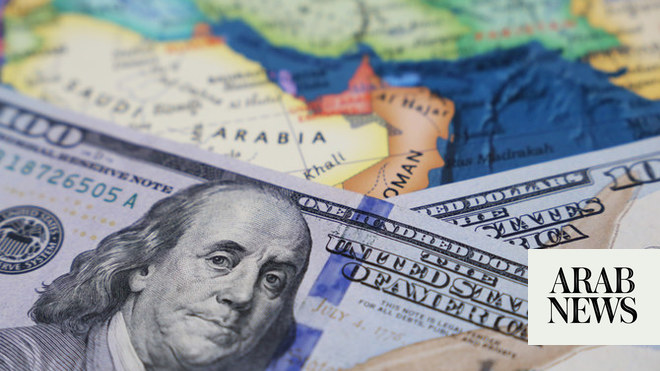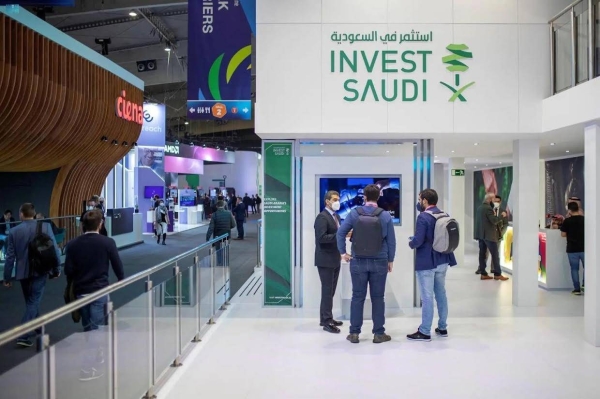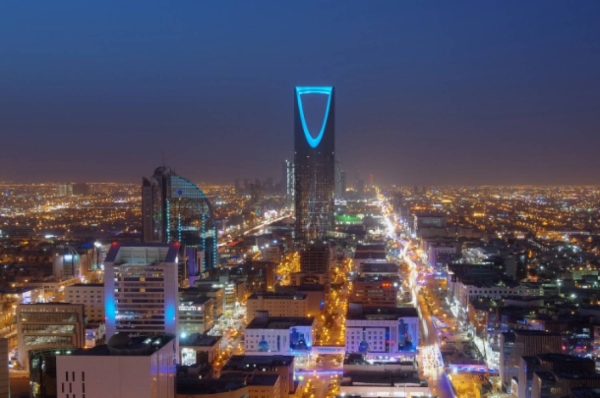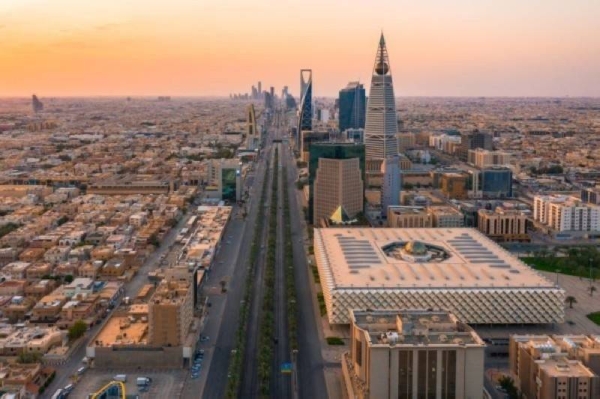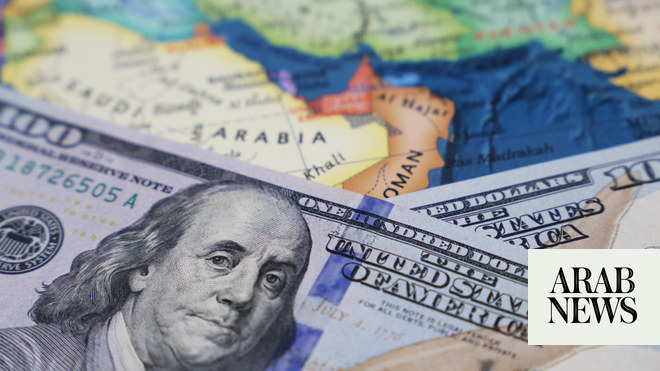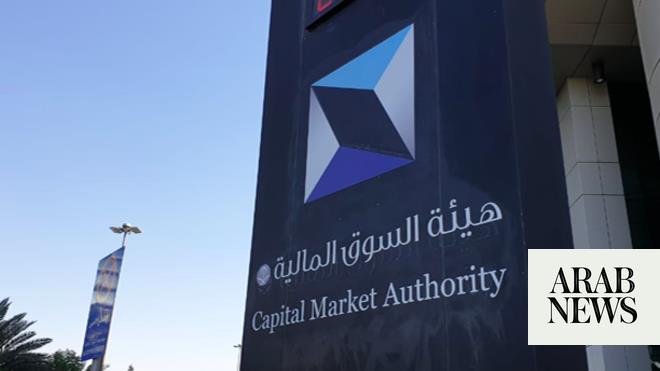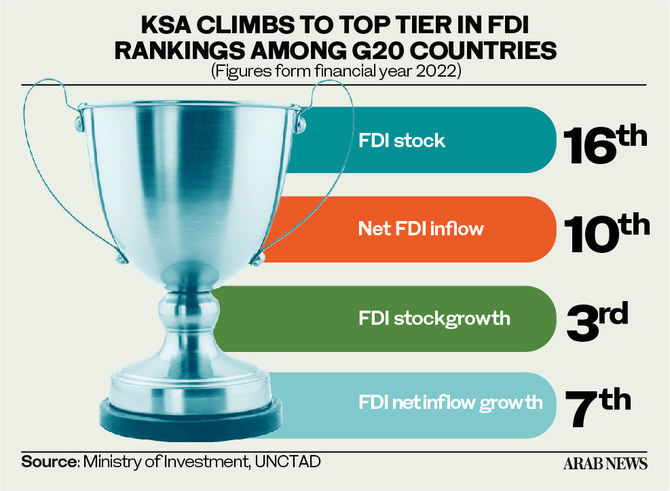
RIYADH: Foreign direct investment inflows to Saudi Arabia hit SR17 billion ($4.53 billion) in the third quarter of 2023, according to the General Authority of Statistics.
The authority has released FDI data for the first time since adopting the new calculation methodology in October.
This method was developed in collaboration with the International Monetary Fund, involving joint efforts between the Saudi Central Bank and the Ministry of Investment.
Under the new methodology, outflows of FDIs from the Kingdom reached SR5 billion, with a net figure amounting to SR11 billion.
According to GASTAT, this reflects a 10 percent decrease compared to the previous quarter, with a net flow of SR13 billion.
Fahd bin Abdullah Al-Dosari, chairman of the General Authority for Statistics, highlighted that the Kingdom’s inaugural disclosure on FDI signifies a commitment to a new global standard, enhancing the quality and transparency of statistical methodology and setting world-leading levels of transparency and governance as reported by the Saudi Arabia Press Agency.
As per the bulletin findings, the overall stock of FDI in the Kingdom stood at SR762 billion by the close of 2022.
Additionally, total inflow reached SR123 billion, while outflows amounted to SR17 billion. Consequently, the net FDI flows totaled SR105 billion.
According to the Ministry of Investment, the inflows accounted for 3 percent of the gross domestic product in 2022, surpassing the target for the year.
Eastern Province, Riyadh and Makkah, recorded the highest FDI in 2022. Additionally, manufacturing, transportation, storage, wholesale and retail trade, and financial and insurance activities represented 70 percent of the total FDI stock in 2022.
“The new methodology came as an affirmation of the Kingdom’s efforts to promote investment and its endeavor to improve the quality and transparency of data and create a globally attractive investment environment,” added the ministry.
These endeavors include diverse initiatives like implementing the National Investment Strategy, initiating the regional headquarters program, and introducing zero-income tax incentives for foreign companies.
Considered a vital facilitator of Vision 2030, this strategy seeks to drive the expansion and diversification of the Kingdom’s economy.
This entails increasing the contribution of FDI to GDP to 5.7 percent and positioning Saudi Arabia among the top 10 economies in the Global Competitiveness Index by 2030.
The ministry highlighted that the new methodology provides accurate and comprehensive data accessible to local and foreign investors.
It involves the analysis of companies’ financial statements, encompassing ownership rights, debts, and receivables among resident firms, associates, sister companies, and parent companies abroad, considering credit and debit balances, loans, and distributions.




